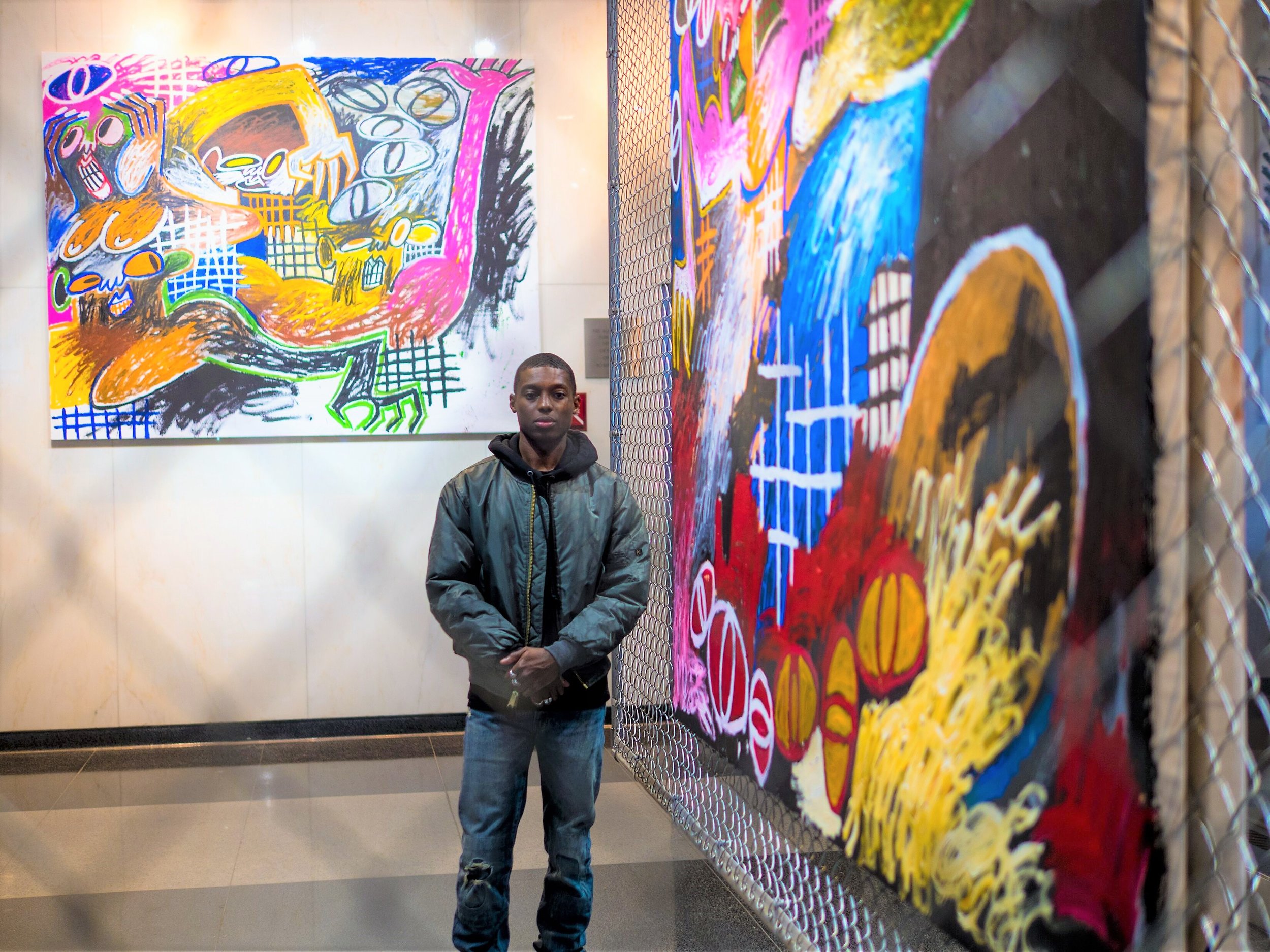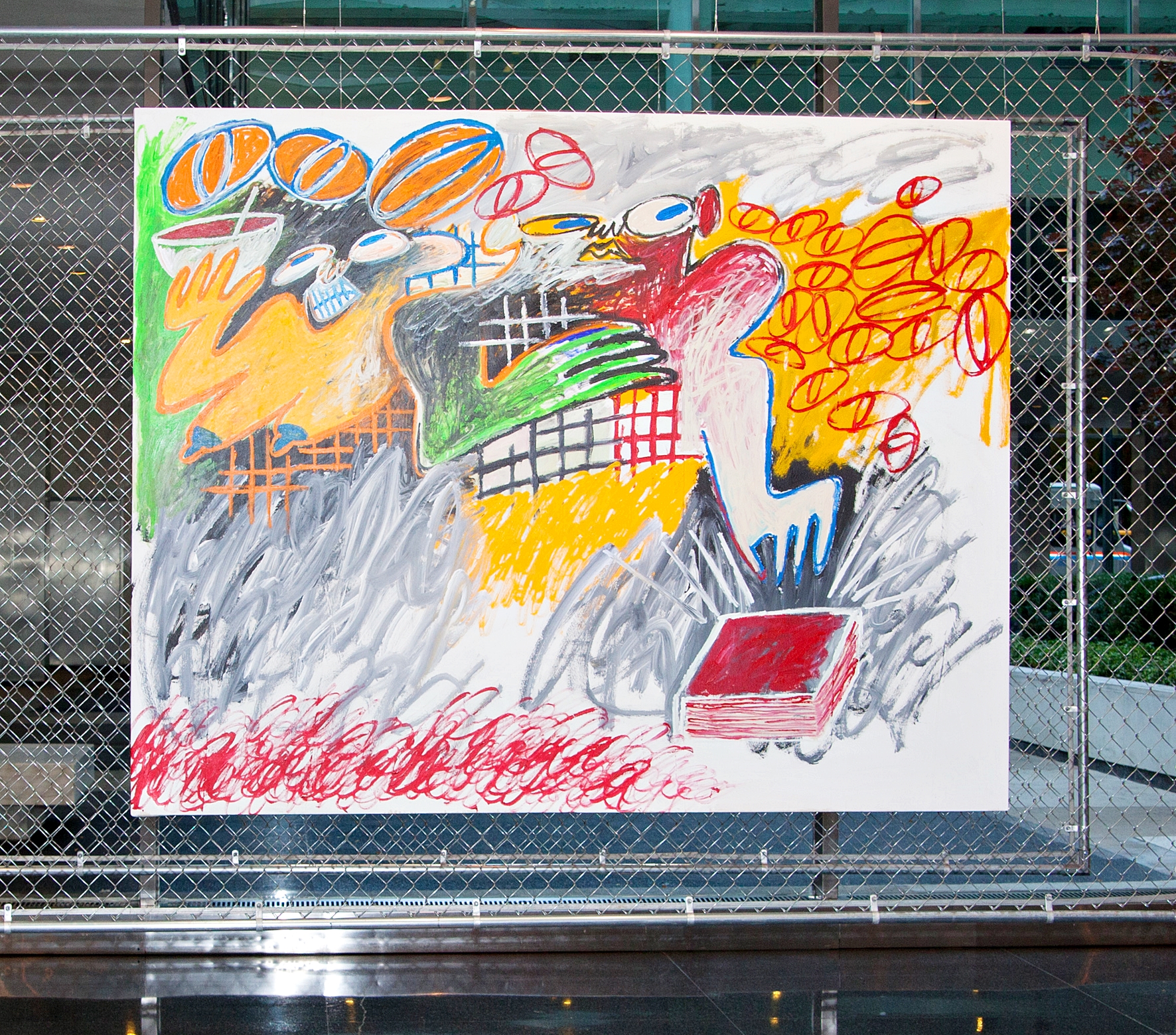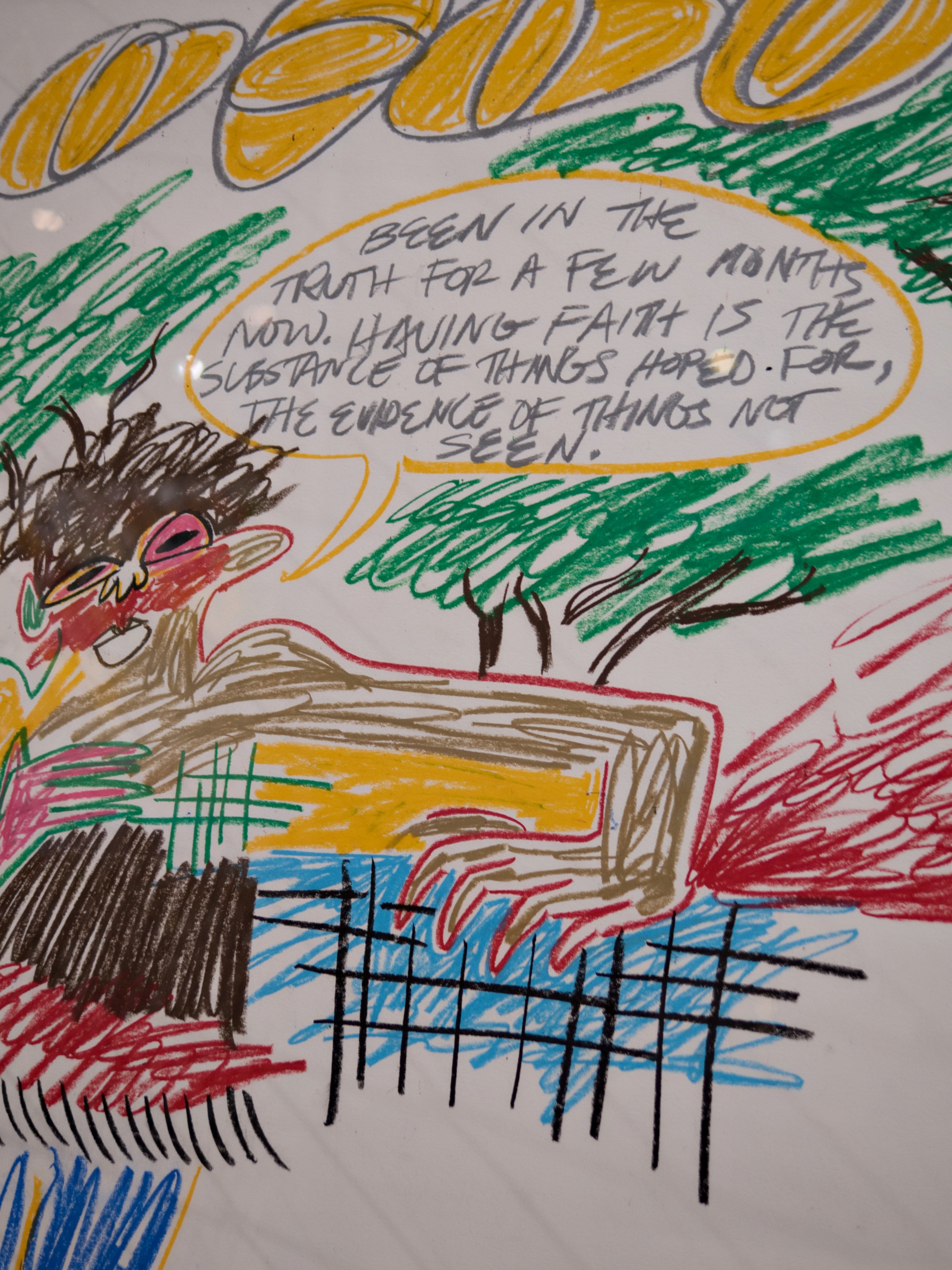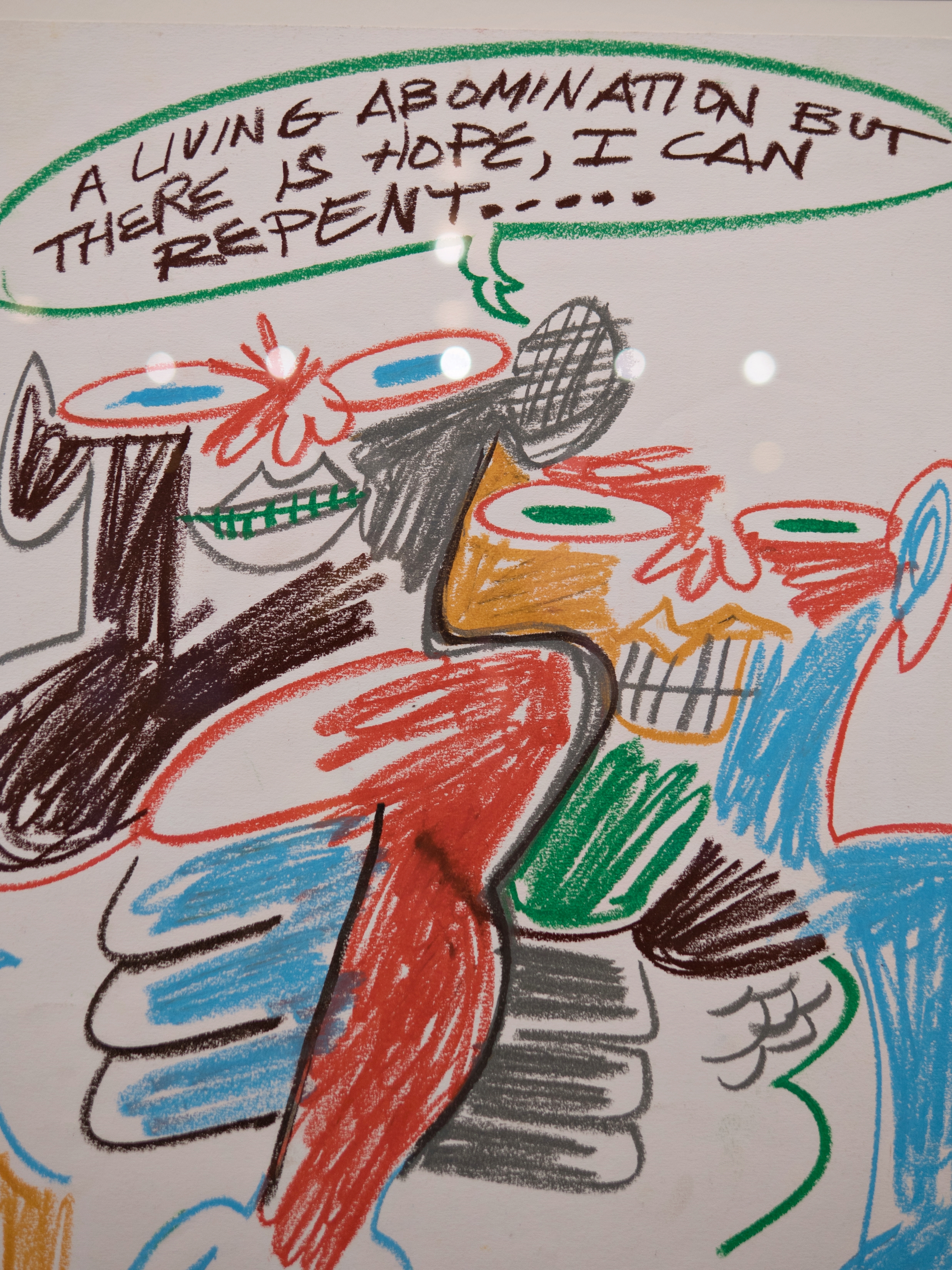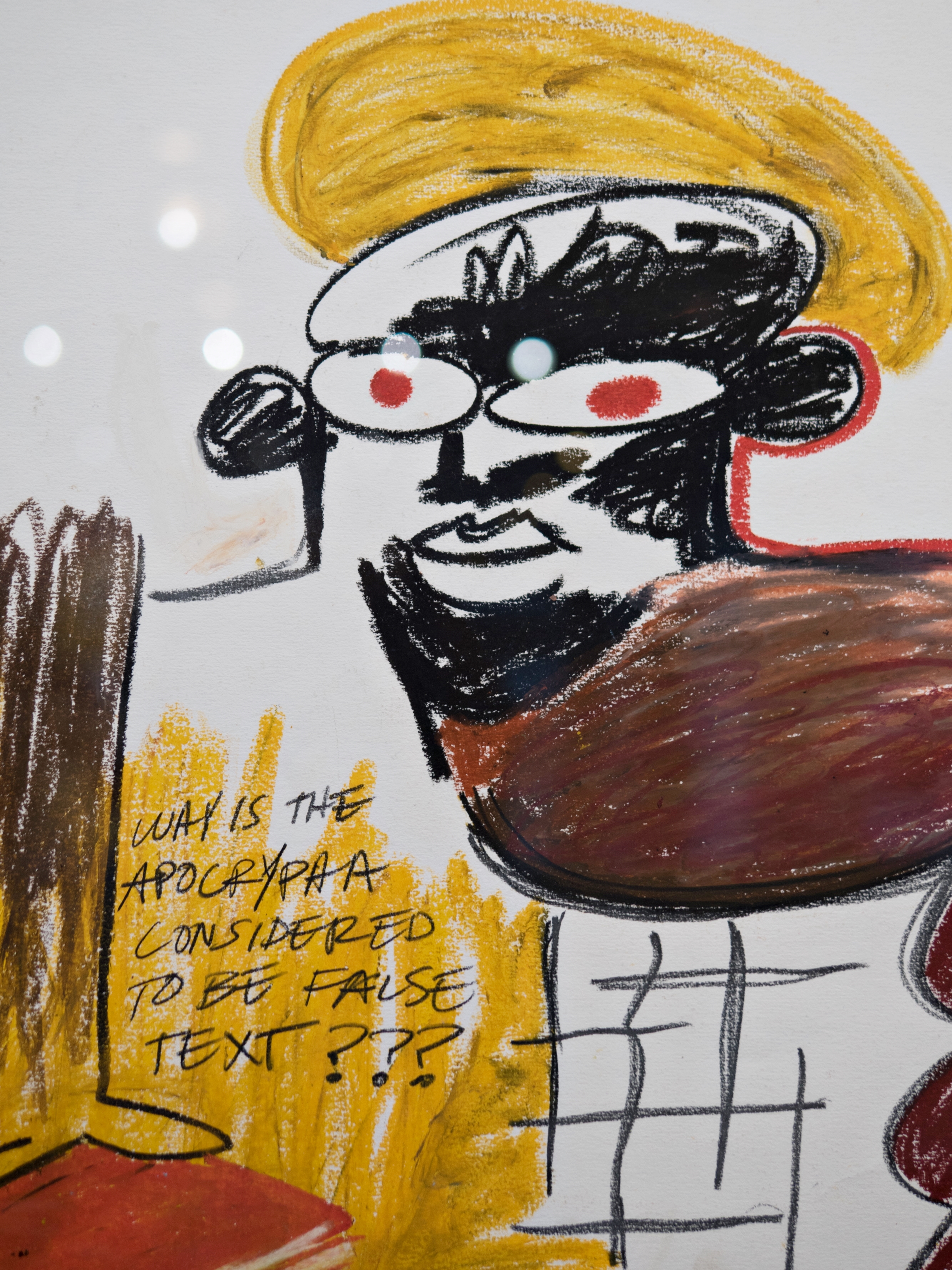Pausing to See a Premonition: Reginald Sylvester II at Lever House
It's said that premonitions only come to people who can quiet their minds to see or hear beyond the physical realm. The never-ending bustle of New York City prevents people from pausing and seeing. Things are taken for granted: the eyes, which have been inundated with an overwhelming amount of imagery, at some point are not discerning anymore, and intuition can be drowned in noise. Midtown, in particular, is a good example of this: it hosts thousands of corporate offices; and men in grey suits holding lunch bags abound, moving fast in robotic and uninspiring attitudes. And then there is Lever House, which stands in the middle of this organized chaos, and all the great exhibitions that have been presented in the lobby and outdoor plaza of this landmark green, glass tower serve the city so well, not only because there is a need to escape the numbness, the apathy and the relentless force of this city, but also because the art presented is so compelling. Ranging from “The Virgin Mother”, that 33 ft. controversial sculpture by Damien Hirst to “The Snow Queen”, Rachel Feinstein's fairy tale of fantasy, ruin and beauty, Lever House’s shows remain in New Yorker’s memories.
Video produced by Maria Brito. Camera: Peter Koloff. Editing Maria Brito and Peter Koloff.
The latest of such exhibitions is “Premonition” by Reginald Sylvester II, a 30-year-old, Brooklyn-based, African-American artist whom I met at Lever House's lobby for a walk-through of his show. There are eight large acrylic and oil stick-on-canvas paintings, visceral works with saturated colors and energetic strokes that create compositions oscillating between figuration and abstraction. There are some medium-sized works on paper and there is a grid installation of 15 smaller works on paper that incorporate figures and text. All the works are hanging on fences, and this is a feature of the exhibition that moves and intrigues me. Reginald says that since the cross hatching appears in his paintings, the fences came to life when he was trying to figure out a way to bring some of their elements into the three-dimensional space. “When there is so much circular motion in the way I paint, breaking that circularity with more straight lines in vertical and horizontal was necessary as far as my mark-making goes.” But I'm more interested in the conceptual reason of the fences, and so I press, and he adds that “they act as and do have a relationship to jail, to being imprisoned or locked up... because even with myself, I have a feeling sometimes of being free and not free at the same time.”
I noticed that the works on paper have sentences from Scripture and ask if his growing up as a Christian was such a pivotal part in his life that he had to express it in his paintings. But in his answer, there is more to it than that; there is his own interpretation of life as he gets older. The drawings have texts because they are like insights into the paintings: the latter take much longer to make, while the former are immediate and spring out of instinctive moments, ideas and thoughts that are coming to him like premonitions.
It is easy to fall into the trap of comparing the work of Reginald to that of Jean-Michel Basquiat because of the neo-expressionistic combination of using bold colors and rapidly rendered human figures with more abstract elements, not to mention the links of race and youth. Reginald is unfazed about this and sees the parallels as flattering, being quick to point out that Basquiat was influenced by other artists such as Picasso and that his own work draws from the legacy of Twombly and De Kooning, among others. One aspect, however, that Reginald believes joins him to Basquiat in particular is that the fears that the late artist had as a black person haven't changed today, especially in the art world were there isn't yet enough diversity across the board - not only among artists but also collectors, curators and gallerists.
Growing up, faith was a big part of Reginald's life. The evolution and growth of his work is faith-based and that's why he took up abstraction – to him, abstraction is the painterly way of faith. He told me: “You are not going into the painting to make an image, but to make a moment: life isn’t perfect, you make mistakes and marks that you are proud of; it is the faith in life, in God, that even when I don't know how the painting will turn out, it will come through because faith is believing in something that is not seen.”
Becoming 30 is usually a coming-of-age for many. In a way, I believe Reginald had a premonition that this show was a rite of passage that would change the course of his career, and I don't think people will need supernatural powers to see this.
Reginald Silvester II
Premonition
Lever House
390 Park Av
New York, NY 10022
Until February 28, 2018


